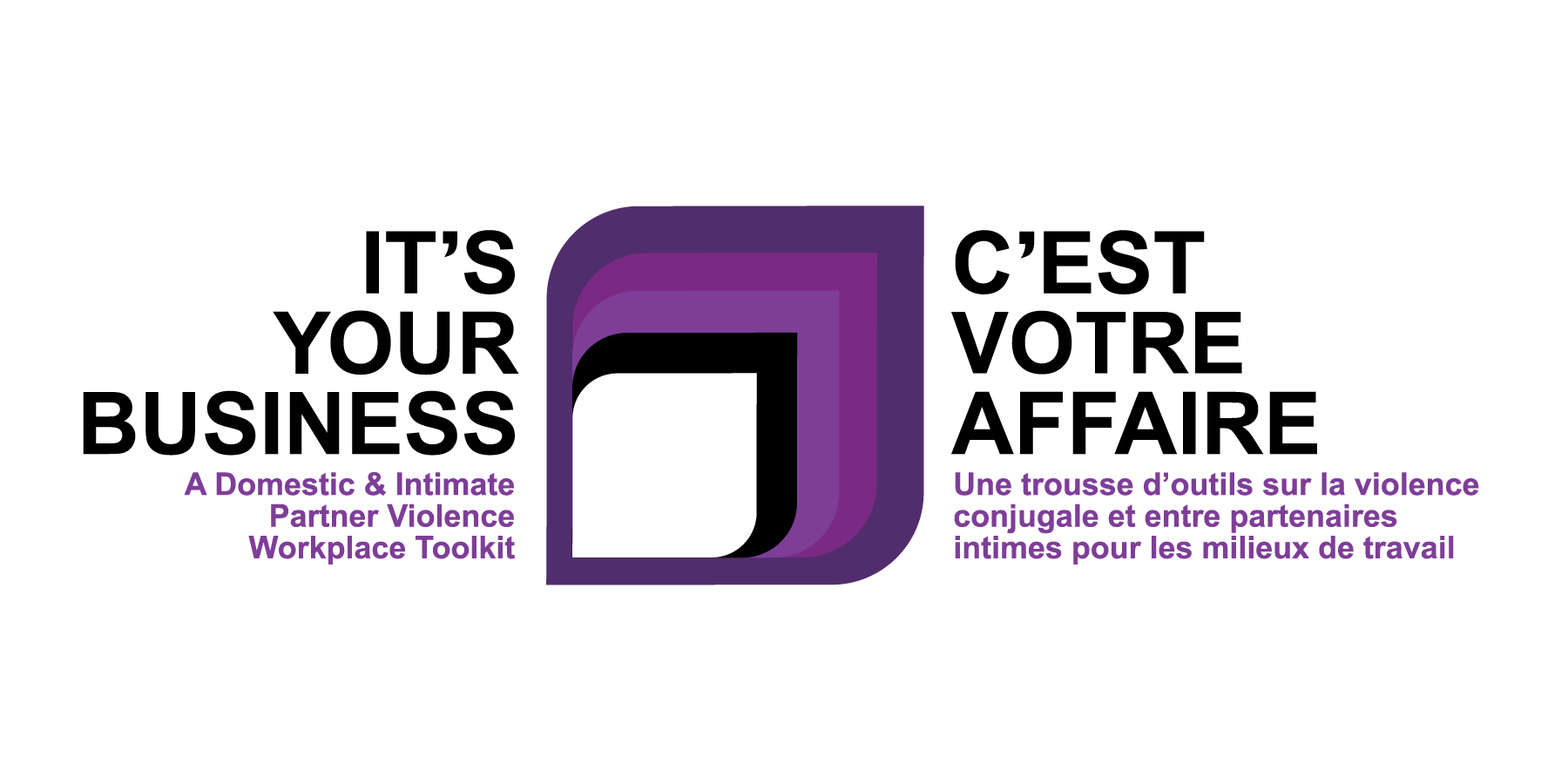Domestic and intimate partner violence is everyone’s business
When domestic or intimate partner violence (DIPV) is discussed or witnessed, we often hear comments like “That’s between them”, “It’s none of my business” or “I’m staying away from that.” Attitudes like this can leave victims isolated and may result in a missed opportunity to provide resources or support to someone who is being abused.
We may believe that we are respecting a co-worker’s privacy by not speaking up when we notice signs that they are being abused, or when we witness an incident of DIPV. However, DIPV is under-reported, meaning people suffer in silence and shame because there is a stigma attached to it. If a person becomes aware of, or witnesses, an incident of DIPV in the workplace, speaking up is important. A co-worker may not want anyone else to know, but it is best to check in with them, keeping in mind the following confidentiality and privacy guidelines.
For Employers
- Every situation is different and privacy issues must be addressed on a case-by-case basis
- Only share information on a need-to-know basis. This means that employers should only share an employee’s experience with violence with the people who need to know in order to ensure the health and safety of the employee and the workplace.
- For example:
- Security personnel may need to know to help with safety planning for the employee and for the workplace.
- Human resources (HR) personnel may need to know in order to help with accommodations that ensure health and safety of the employee.
- Security and HR personnel must respect the confidentiality of the employee.
- Give the employee choices where possible, and make sure they are involved in every step of the process. Allow them to be the one to share the information when they are ready to, or invite them to be present when the information is shared with others.
- If discussions of the employee’s experience of violence are required to ensure the health and safety of the employee/workplace, clearly explain to the employee who needs to know and what information needs to be disclosed.
- Explain to the employee that the information they share will not be kept confidential if:
- The employee consents to the employer sharing their information
- If the employer is compelled by law to share the information (e.g. when there is a serious and imminent risk of danger)
- Respect privacy and personal boundaries, maintain confidentiality and be discreet when sharing personal information. Use good judgment and refrain from criticizing or labelling victims.
- If the employee does not feel their information will be kept confidential or disclosed respectfully, employees may not disclose a future risk of DIPV in the workplace.
- Employers need to balance their responsibility of keeping workers safe with employees’ rights to confidentiality.
- Clear communication and involvement in these processes can help the employee feel more empowered and in control of their life. It is important to empower survivors of violence and help them feel in control of their life again.
- Employers have a duty to “take every reasonable precaution to ensure the health and safety” of employees.
- If there is a risk of significant harm, do not hesitate to inform the appropriate authorities to ensure the continued safety of employees and the workplace.
For Co-Workers
- Isolation is often a weapon used by abusers to control their victims.
- An employee who suspects that a co-worker has experienced violence can help break that isolation by checking in with the co-worker, in private.
- Taking that first step may be uncomfortable, but it will start a conversation that could help the co-worker reach out for help when they need it.
- Do not gossip or spread rumors.
- If a co-worker shares an experience of violence, a supportive colleague should:
- Offer a list of resources and supports available in the community.
- Express their concern and ask how they can help.
- Suggest that the co-worker notify their employer. Explain that the employer needs to know so they can provide accommodation, safety planning and resources.
- Where someone believes that there is a significant risk of harm to a co-worker or to others (in the workplace or otherwise), they should notify the employer and/or the appropriate authorities.
- Let the co-worker know of the concerns with regard to their safety or the safety of others.
- Offer to accompany the co-worker to meet with the employer to make them aware of the risk of violence in the workplace.
- If the co-worker does not want to tell the employer:
- Explain that it is important for the employer to know if there is a significant risk of harm in the workplace.
- Explain that it is in the best interest of all involved, including them, to make sure the employer is aware of the risk of harm.
- Let the co-worker know of plans to notify the employer without the co-worker’s participation.
- Reassure the co-worker that their privacy and their safety are important.
Resources
